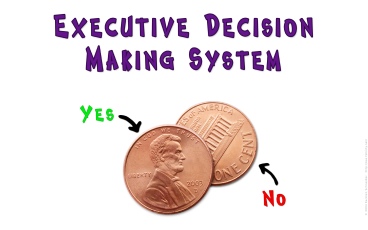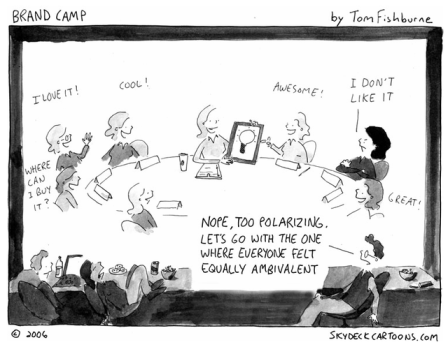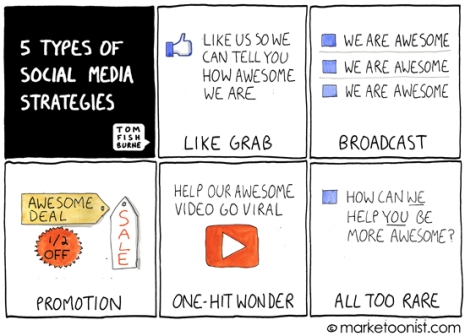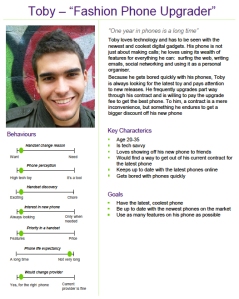
Lack of measurement leads to the dark side: ego driven websites and social media.
Whether you like it or not, data is important. I have heard the arguments about Google Analytics and the rest don’t tell the whole story about your audience. The question is: if you are measuring nothing, how can you make any comparisons or determine success and failure.
Lack of measurement leads to the dark side: ego driven websites and social media. This is when the website content is based on the whims of someone – usually whoever is in charge – with no quantifiable reasons for the decisions made. It basically boils down to, “I don’t like Facebook, so it is not worthwhile,” or “My wife told me she didn’t like our landing page, so we should change it.”
Beware the Uneducated Boss
In his article “Social Media Measurement: The Numbers Suck Because the Models & Metrics are Wrong,” Sean Carton notes that “Currently only 16 percent of CEOs participate in social media themselves.”
This is huge problem, because people tend to think that things they don’t like aren’t important. Carton also notes, “Most companies (2/3rds) didn’t have any clear way of measuring what they were doing social media-wise and most weren’t bothering to measure the performance of their activities against their social media objectives. Most weren’t even measuring revenue generated by social media efforts.”
With the amount of people on Facebook alone, it seems crazy not to add social media to your marketing plan, but there have to be some ways to measure. However, with no types of measurement of success, all it takes in a non-believer boss to turn their back on social media, and you are missing the chance to reach millions of potential customers.

No measurement is perfect, but you must pick something! At least then you can set a benchmark.
Pick something
As I mentioned, there is no perfect metric in web and social media analytics, but you have to pick something – some way to show that your efforts are paying off. A few suggestions:
– Sell the idea of affinity. Try to show the social reach of your posts, noting what works and what doesn’t. This can give your boss the idea of the power of social media.
As Carton says, “The reason that nobody clicks on Facebook ads is because they get in the way of why people are on Facebook: to talk to each other, not to find products and services. “Marketing” in social media has to be about facilitating conversations, not interrupting them. Measuring the impact of social media has to move beyond the idea that it’s going to drive clicks and move toward measuring influence, participation, engagement, and, yes, delight.”
Rather than looking at how many products you sold in a limited amount of time, look at how many people are talking about your posts? The average person on Facebook has 190 friends, so anyone who has interacted with your content has broadcast (hopefully) good vibes about your company to 190 people.
You can measure Facebook Insights right from your page, or you can use a tool like HootSuite some cost) or ThinkUp (free!) to measure it for you and put it into nice, pretty reports.
– If you have made your website a destination, perhaps by posting news articles or blog posts on a regular basis, you can use Google Analytics to track where your visitors are coming from. Share with your boss the amount of traffic coming from Facebook and Twitter posts.

Facebook = Free Focus Group
– Note the idea of free focus groups. As I mentioned in this post, large companies like Frito-Lay are eschewing focus groups and taking R&D right to the people. You have your audience right in front of you. Don’t be scared to interact. It’s called SOCIAL media. Be social.
As mentioned before, there are no silver bullets for social media measurement, but if you arm yourself with some type of facts and measurements, you will easily defeat the ego-driven, information-free powers that be.
 Hey Gang! I want to share an article with you by David Cohen titled “Report: Facebook Pages More Effective Than Websites“. Normally, I prefer to paraphrase articles and put in my own two cents, but Cohen’s article is so succinct that I have decided to reprint it in it’s entirety. Here it goes:
Hey Gang! I want to share an article with you by David Cohen titled “Report: Facebook Pages More Effective Than Websites“. Normally, I prefer to paraphrase articles and put in my own two cents, but Cohen’s article is so succinct that I have decided to reprint it in it’s entirety. Here it goes:
















